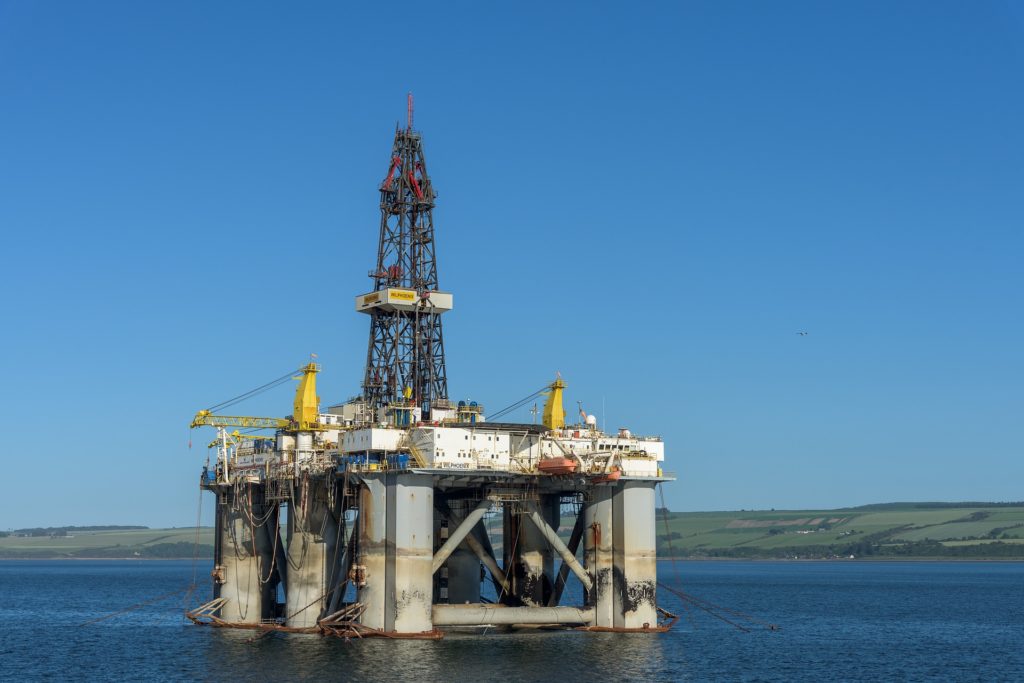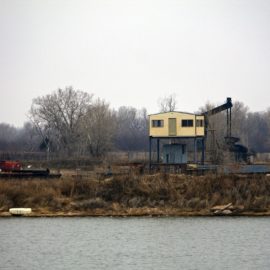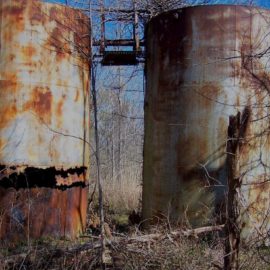
When an oil well and the rest of the pumping and drilling equipment is abandoned who pays for the clean up? The company? The State? The taxpayers? or no one? One company is planning to abandon 1,700 wells and so we will see. This could be an environmental disaster.
A Houston oil company that grew into one of the largest producers in the Gulf of Mexico before going bust last year is planning to abandon hundreds of oil wells and pipelines it acquired over the last decade, potentially adding to the fast-growing tangle of neglected oil and gas infrastructure off the Louisiana coast. In its second bankruptcy filing in less than three years, Fieldwood Energy LLC has proposed abandoning what could amount to 1,715 wells, 281 pipelines and 276 platforms. The wells Fieldwood wants to discard account for about 6% of the active wells in the Gulf. Responsibility for the unwanted infrastructure would likely fall to past owners, including BP, Royal Dutch Shell and Chevron, or the federal government — and, therefore, taxpayers.
nola.com
Other oil companies objected as they see catastrophe looming if the wells are not properly capped and maintained. There will be the possibility of oil leas and explosions.
BP, the company at the heart of the 2010 Deepwater Horizon oil disaster, was particularly pointed. Other oil companies object as they say that this could be a catastrophe with oil leaks and explosions if the wells are not properly capped. “Because hurricane season in the Gulf of Mexico begins at the same time as (Fieldwood) seeks to abandon its obligations, it is critical and of utmost importance that any abandoned wells and platforms and related assets meet all necessary regulatory requirements to avoid or reduce the risk of an environmental disaster,” lawyers for BP said in a June 1 objection to Fieldwood’s plan. Chevron said Fieldwood proposes to “foist billions of dollars of safety and environmental obligations upon the U.S. government, taxpayers, and others.”
Proper decommissioning and assorted related actions could top $9 million.
“How these enormous obligations are dealt with is critically important,” Chevron’s lawyers wrote in an objection. Shell’s lawyers warned that approving Fieldwood’s plan could encourage more operators to shed underperforming wells.
Fieldwood did not offer any comments. The Lafayette company has bought up oil leases from other companies and became the largest assett holder in the shallow gulf as other companies moved farther offshore into deeper waters.
In 2014, Fieldwood CEO Matt McCarroll told the Houston Business Journal that the Gulf had been “given up for dead.” He expressed confidence that his strategy of buying up low-profit offshore leases would pay off. “We do what we know,” McCarroll said. “Know what you’re good at and stick with it.” The oil market didn’t move in Fieldwood’s favor. Prices tumbled in 2014 from highs above $100 a barrel as production from hydraulic fracturing continued to surge and OPEC members elected to keep pumping oil. Over the next few years, oil held around $50 to $60 per barrel, only to plummet early in 2020 as demand cratered during the coronavirus pandemic. At one point in 2020, prices turned negative, indicating there was so much oil sloshing around, producers were worried about where to store it.
Only in the recent weeks has oil rebounded with the cost of barrel pegged at $75.23 Friday.
Oil and gas production in the shallow Gulf, where Fieldwood was focusing its growth, has been declining for the past two decades. Meanwhile, well abandonment has been on the rise. According to a 2017 LSU study, about half of the Gulf’s 53,000 wells are now unused. Other parts of the world are experiencing the same trend. A recent study by Norwegian researchers said offshore well operators in the Gulf, North Sea and elsewhere are “informally talking about an upcoming ‘plug and abandonment’ wave.” Even when properly decommissioned, wells pose environmental and safety risks. Plugs can fail and metal well linings are prone to rust. Wells can also re-pressurize, pop their tops and begin spewing oil. Climate change is triggering stronger and more frequent storms that can damage abandoned oil and gas infrastructure. Methane emissions are another growing concern. A 2020 study by McGill University estimated that the amount of methane seeping out of abandoned wells in the U.S. has been underestimated by 20%. Methane pollutes water, degrades air quality and hastens global warming much faster than the carbon dioxide emitted from burning fossil fuels, the study said.
Oversight of abandoned oil wells is a problem. Energy regulators are letting companies off the hook as they abandon wells and pipelines in the Gulf. There are estimated to be 9,000 miles of active pipelines in the Gulf that are not being monitored closely.
Large oil companies are worried Fieldwood may saddle them with all the responsibilities that come with their old wells. If Fieldwood is successful, more small and mid-size operators may use bankruptcy as a means of offloading even more wells, the companies said. What Fieldwood is proposing “is truly unprecedented” and “fundamentally flawed,” Chevron’s lawyers said. “In reality, the debtors’ plan is a liquidation” rather than a bankruptcy. “It will use other people’s money to satisfy the debtors’ multi-billion dollars of safety, environmental and other liabilities.”
Fieldwoods bankruptcy hearing is coming up soon. I am sure they will abandon the wells and someone – probably us, will end up suffering.



